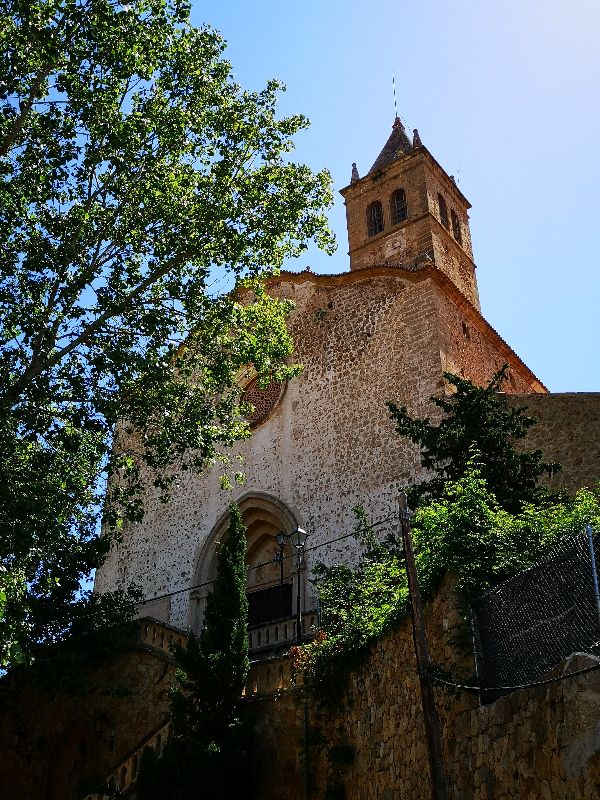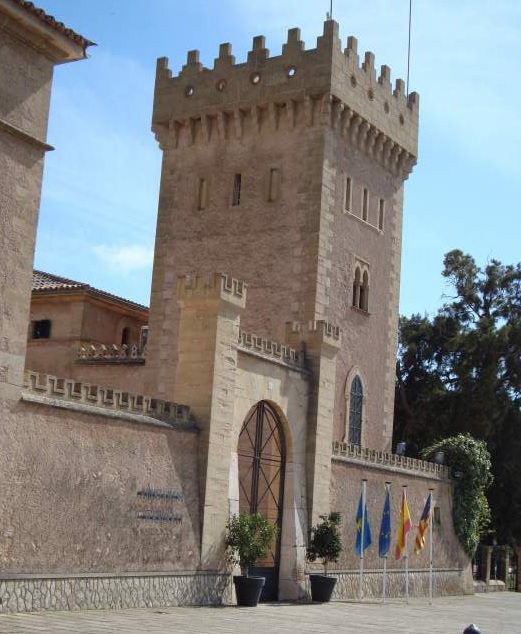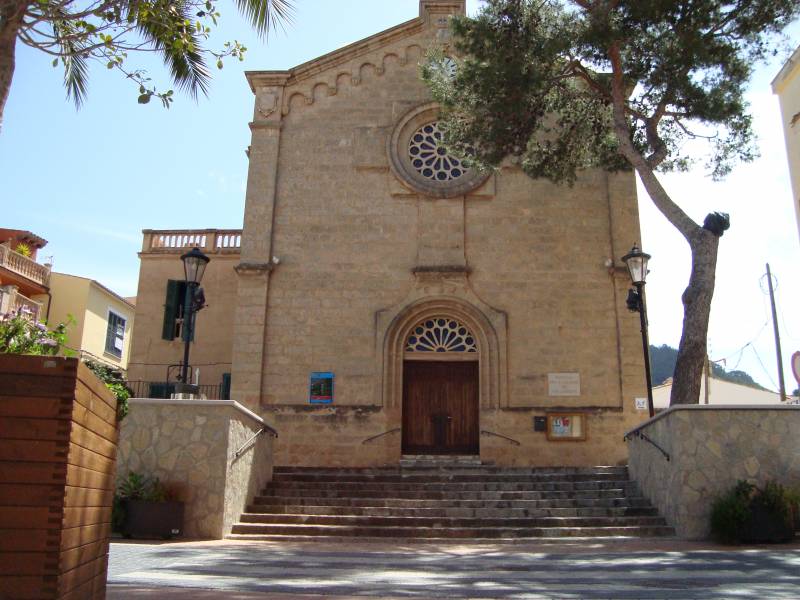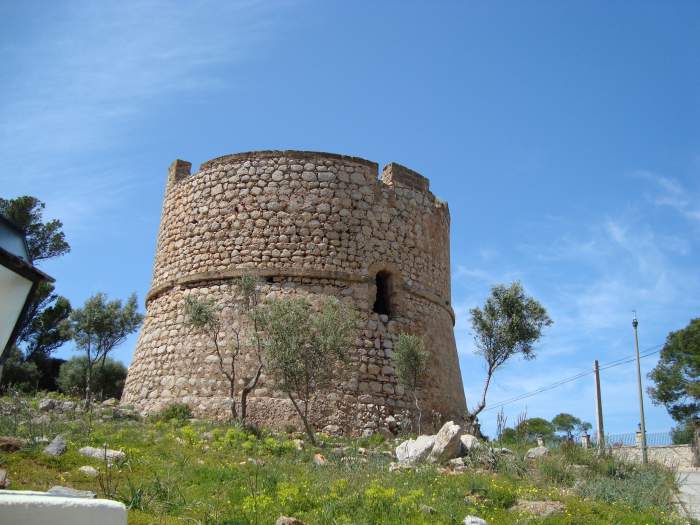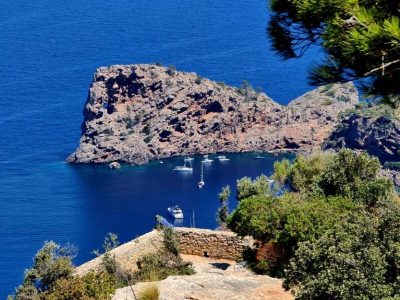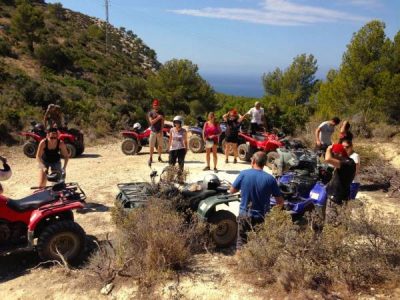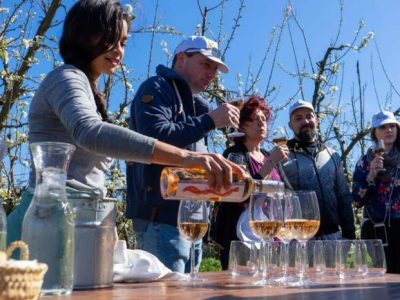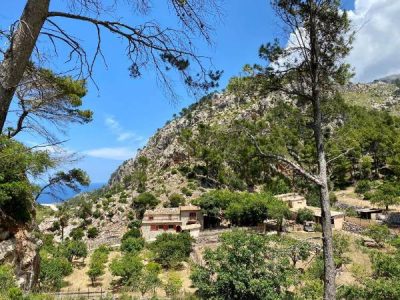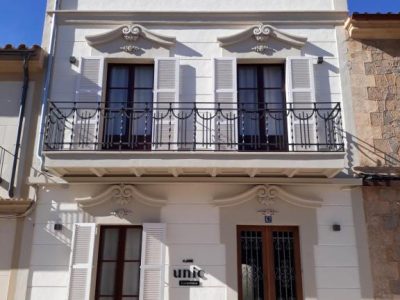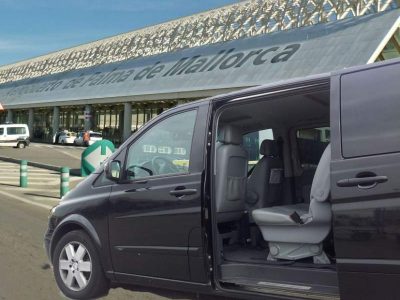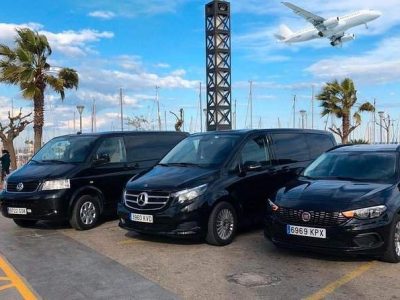All your holiday planning needs in one place, letting you book direct and benefit from official online rates
- Places To Go
- Things To Do
What’s Your Interest?
Traveling with kids
- Blog
Andratx Things to do, hotels, market
Discover all the things to do in Andratx, the history of the area, the markets, annual events, places to stay and eat and some practical info you might need.
- I want to go!
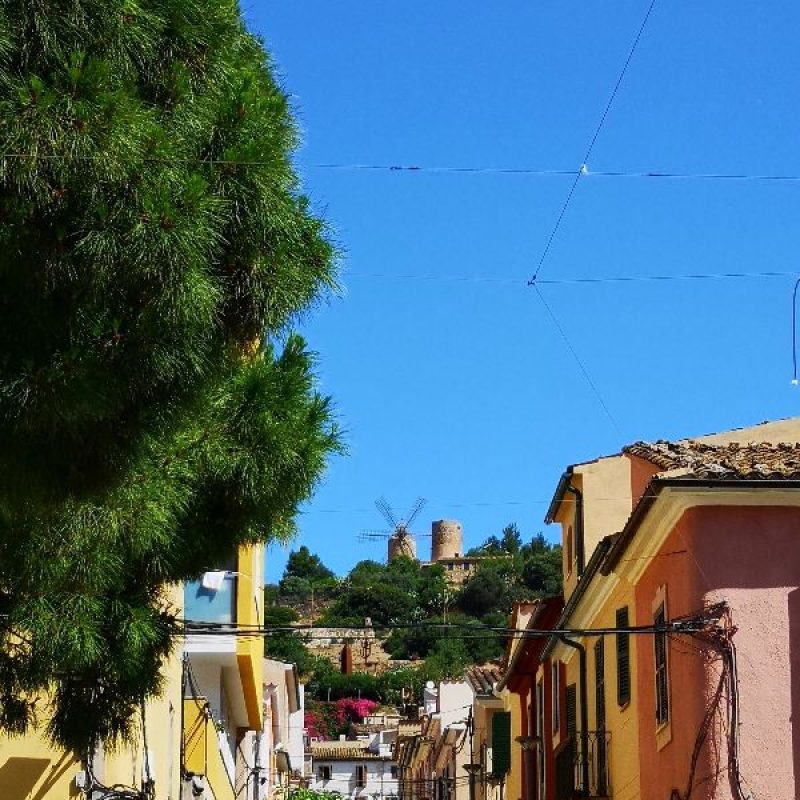
Why visit Andratx
Is Andratx worth a visit?
The trip to Banyalbufar from Palma is at least as beautiful as the village and the area itself. The winding roads take you through idyllic small village communities filled with charm and typical Mallorcan architecture, plantations of olives, oranges and almonds – a jumble of “true Mallorca”.
LA TRAPA
La Trapa is large property set in the most privileged location with views over the sea, mountains and the Sa Dragonera island. La Trapa has its name from the former Trappist monastery that was built here by monks, in 1810, buildings that you can explore while you admire this impressive place, e.g. remains of the chapel, the mill and the stone terraces built with the dry stone technique.
ESGLÉSIA DE SANTA MARIA DE ANDRATX
The imposing fortified parish church of Santa Maria stands out in the heart of the old medieval town. Back in the 16th century, the church was used for protection as Mallorca was continuously attacked by pirates.
SON MAS
Son Mas is an impressive old fortified mansion overlooking the entire town and valley from its position. Son Mas houses the town hall of Andratx, as well as a public exhibition space featuring various contemporary artists.
ESGLÉSIA DE NOSTRA SENYORA DEL CARME
The church of Carmen is the church in Port d’Andratx, a church built with the hands of the local fishermen, as a response to the increasing fishing industry of the area. Several times a year during the celebrations of the local traditions, you can experience processions from the church moving through the streets of the village.
WATCHTOWER OF SANT CARLES
The watchtower of Sant Carles was part of an extensive defensive network of towers around the coasts of Mallorca. With flags and smoke signals, the tower communicated with other towers whenever an enemy vessel was spotted in the sea. From its position high on the hills of Port d’Andratx, you can enjoy the stunning views over the entire bay area.
PLAY GOLF AT THE BEAUTIFUL GOLF D’ANDRATX COURSE
Golfers love coming to Andratx, and there is an obvious reason for that; the Golf d’Andratx course. Golf d’Andratx is by far one of the most beautiful golf courses on the island situated in stunning settings with the Tramuntana rising in the background. The 18-hole course is full of fun and difficult challenges that will make it interesting to play no matter what your handicap is.
ENJOY A UNIQUE CULTURAL EXPERIENCE AT THE CCA ANDRATX
One of Mallorca’a biggest and most renown exhibition spaces in the subject of contemporary art, is the CCA Andratx (Centre of Comtemporary Art). The art museum is situated in an impressive old finca in beautiful natural settings near the old town of Andratx. As well as the many changing exhibitions, CCA also offer a wide selection of activities and event to indulge in.
DISCOVER THE SECRETS OF THE MOUNTAINS
Andratx enjoys an excellent location in the southwestern part of the Tramuntana range, allowing for direct access to the numerous marked routes leading about in the UNESCO protected nature. Explore the Balearic wildlife, feel the uncontaminated mountain air and take in the breathtaking panoramic views from the many viewpoints as you discover the rich heritage of these mountains. Tramuntana is a true paradise for walkers and hikers, so tie up your shoes and get going or join an arranged excursion.
INDULGE IN AN ARTISTIC BRUNCH AT THE LIEDTKE ART MUSEUM AND APARTMENTS
Liedtke Art Museum and Apartments, is the perfect combination of artistic expression and Mediterranean charm. Every Sunday morning you can indulge in their paella brunch with live music and entrance to the art museum with hundreds of splendid works exhibited.
ENJOY A MEAL OR REFRESHMENT AT THE LAVISH MARINA OF PORT D’ANDRATX
Port d’Andratx is known as one of the most exclusive and lavish areas of Mallorca, a place that possess both natural beauty and some of the most expensive properties in Spain. There is a wide array of restaurants to choose from in Port d’Andratx, many located with stunning views over the cove giving you the most romantic setting for a meal or refreshment.
IMAGE GALLERY
Enjoy some beautiful pictures from Inca
FAQ
- Finca Ses Fontanelles
- Holiday Home Can Tiona
- Unic – Turisme d’interior
Driving to the beaches near Port d’Andratx takes about 15 minutes from the old town.
Events in Andratx
Weekly market
The weekly market in Andratx happens on Wednesdays in the center of the old town. The markets in Mallorca are always a great event, no matter where on the island you are. This is where the locals and tourists meet as neighbors in a vibrant and friendly atmosphere among hundreds of stalls lined up.
The market in Andratx is a traditional market with merchants selling things such as fresh local produce, crafts, clothes, leather goods, oils, salts and herbs. Stroll between the many stalls, sample the local specialties and enjoy a refreshment while observing other people mingle and bargaining.
The market of s’Arracó takes place on Saturdays in the Plaça de la Vila. The market in s’Arracó is much smaller than the market in Andratx, however, still very much worth a visit.
Annual events and happenings
January
Festes de Sant Antoni
If you are truly looking to experience Mallorcan culture and traditions, the celebration of Sant Anoti is priceless. It is one of the most deeply rooted traditions in the culture of the Mallorcan people, it dates back to the Middle Ages after the Catalan conquest of the island. On Saturday the 16th of January, you can experience dancing demons, fireworks and bonfires in the streets of Andratx’ old town, while on Sunday the 17th the blessings happens.
Where: Old town
When: 16th and 17th of January
February
Sa Rua
Before Lent, between “Fat Thursday” and “Ash Wednesday”, the feast of Carnival or “Carnestoltes” takes place in the old town and in the village of s’Arracó, which ends with the “Entierro de la Sardina” (Burial of the Sardine”) .
In keeping with tradition, the different towns of the region parade on the street, the typical“Ruas”. The children parade, “Ruetas”, are organized by the schools and walk the streets in the morning.
Where: Old town, s’Arracó
When: Between “Fat Thursday” and “Ash Wednesday”
April
Fira d’Andratx (Andratx Fair)
The Andratx fair is one of the most important and traditional happenings in the municipality, something both locals and tourists look forward to. The fair has been held since the middle of the 1980’s, a collaborative between the town hall and various associations to get the best and most appealing program lined up every year. Come indulge in a series of cultural and gastronomical activities, as well as a big market of Mallorcan products.
Where: Old town
When: First weekend of April
April fair
At the end of April it is once again time to dress up and set a festive mood in Andratx, this time it is the April fair which celebrates the springtime.
Where: Old town
When: Last weekend of April
June
Sant Pere
Patron saint of Andratx, Sant Pere (Saint Peter), is celebrated during the last half of June. The official date is June 29th, but it is tradition to begin the festivities already two weeks before. During these two weeks, you can indulge in an extensive program of fun and cultural activities all over the town. Some of the highlights include open-air dinners, concerts and games.
Where: Old town
When: Last half of June
Sant Joan night market
The night market in Camp de Mar is a rather new initiative, but a great one. Come enjoy a wide array of local products in various categories and indulge in the vibrant atmosphere of merchants and tourists haggling.
Where: Camp de Mar
When: June 23rd
July
Mare de Deú del Carme
The annual procession of Carmen is a major event in Port d’Andratx, and of high cultural importance. Beside from the procession, some of the other highlights of this celebration include a horse show, folk dances, open-air dinners and concerts.
Where: Port d’Andratx
When: Middle of July
Nit del Art d’Arracó
If you have interest in art, you will surely enjoy the annual art night fair in the charming village of s’Arracó. The art night is held in late July where you can find thousands of artworks exhibited in the streets.
Where: S’Arracó
When: Late July
August
Festes de Sant Elm
During the first two weeks of August, the charming fishing village of Sant Elm celebrates its patron saint, Catalina Tomàs. You can look forward to a large number of fun and cultural events and activities held all over the village. One of the main events during this festival, is the reenactment of a battle between Moors and Christians held at the beach.
Where: Sant Elm
When: Beginning of August
Festa de Ses Madones
Come enjoy one of the most tradition-bound events in Andratx, when the annual Festa de Ses Madones is held. The events of this day are based on the legend of the brave ladies of Andratx, who by the mediation of the Virgin Mary defended the town again Ottoman intruders on August 2nd, 1578. The highlight of the day, is the picking up of each of these ladies on a donkey, and then bring them to the Plaça del Pou, where a flower offering is held accompanied by the music of La Balanguera. Following the flower offering, the group goes to the Santa Maria church for a mass, before finally going to the main square of the town where they perform the traditional dance ‘Balle de ses Madones’ .
Where: Old town
When: 2nd of August
Festes de Sa Coma i Son Curt
The small hamlets of Sa Coma and Son Curt, both celebrate the summer with a town festival in the middle of August. Open-air community dinners, exhibitions, markets, shows and contests are all part of an extensive program spanning over an entire week.
Where: Sa Coma, Son Curt
When: Second week of August
Festes de s’Arracó
From the last week of August and well in to the month of September, the village of s’Arracó celebrates Saint Augustine. You can look forward to more than two weeks of fun and cultural activities and events such as games, contests, exhibitions, concerts, tastings etc.
Where: S’Arracó
When: Late August – beginning of September
September
Campeonata P.R.E Sol de Tramuntana
In late September it is time for the great horse contest and exhibition held in Camp de Mar. The contest is limited to Spanish breeds only, a great opportunity to learn about these majestic animals.
Where: Camp de Mar
When: Late September
October
Mercat de les Flors
The annual flower market held in the main square of Andratx is a scenic and beautiful experience. Hundreds of Mediterranean species are on display, which really illuminates the town.
Where: Old town
When: Last days of October
Fira Opportunitates
In October, the merchants associations of Andratx put together a big sales fair where all shops participate with huge discounts on their products. This fair is very popular amongst locals and tourists who come from all nearby areas to get a good bargain on shoes, clothes, jewellery etc.
Where: Old town
When: October
December
Mercat de Nadal (Christmas market)
Throughout the month of December, Andratx celebrates Christmas with a great market in Plaza España. The atmosphere is enchanting, the town is decorated in beautiful colors and lights, a sweet smell of Christmas pastries fills the air and everyone is in a jolly mood.
Where: Old town
When: December
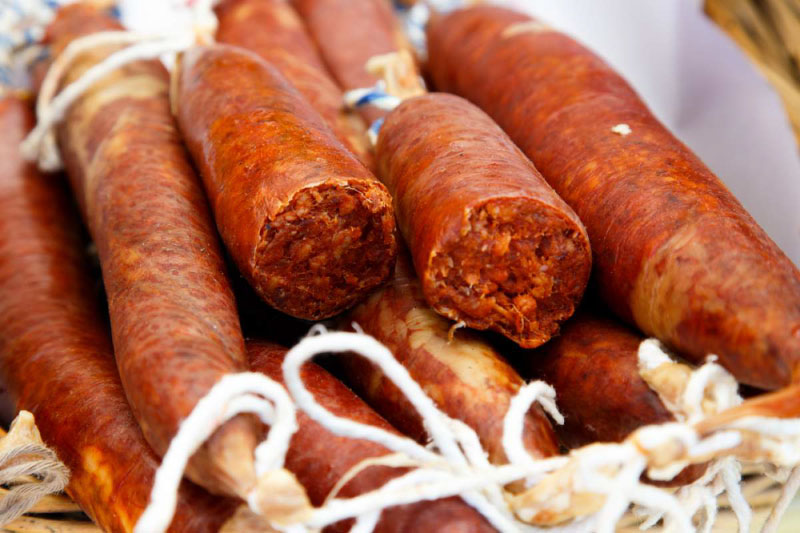
Support Local
Supporting local communities during your travels can have a profound impact. Stock up with groceries locally, stop in an artisan shop or enjoy a refreshment at a restaurant or bar. Now more than ever, these small businesses need support from travelers near and far.
Get to know the area of Andratx
About Andratx
Andratx is a municipality in the region of Tramuntana, located in the westernmost part of Mallorca. There are roughly five population centers within the municipal border, Andratx, Port d’Andratx, s’Araccó, Sant Elm and Camp de Mar, which together comprise about 11,300 inhabitants (2019).
History of Andratx
Prehistory
The origin of human occupation in the area of present day Andratx dates from the early Bronze Age. Some of the first vestiges found and excavated in the area are the caves of Son Bosc and Son Fortuny.
From around 1500 BC, the pre-Talayotic culture arrives in Mallorca and Menorca, an agricultural society that transitioned from caves to constructions. In Andratx, there has only been found one site that represents this period, namely the Son Basses which testify to this culture of vessel-shaped constructions for habitation.
Later, around 1100 BC, the Talayotic cultures arrived in Mallorca and Menorca, a culture unique to these two islands. The Talayotic culture got its name because of the tower-like constructions these people built, in Catalan talaia means “lookout” or “watchtower“. The Talayotic culture was too an agricultural society, but a clear sign that the islands were starting to get inhabited by people arriving from other places, because there was this need to build military architecture for scouting. The best known remain from the Talayotic culture in Andratx is the one of Biniorella, found near the current golf course. But there has also been discovered remains at Son Fortuny and Es Castellàs in the village of s’Arracó.
During the late Bronze Age, colonizers from the ancient Greek world and Phoenician culture started to arrive on the islands. These highly productive and active producers and traders mixed with the indigenous peoples, probably taking many of them as slaves to work in their textile factories and for oaring on the ships. The Phoenicians had a predilection for coastal areas and islands, as it made it easier for them to engage in trading with other colonies in the Mediterranean basin, for example the Greek colony of Empuries in present day Girona, Catalonia. The Phoenicians also knew about the minerals and metals in the ore-belt, that extended in the southern part of the Iberian peninsula, which allowed them to produce jewelry and burial gifts. Along the coasts of Andratx, wrecks of vessels, ceramics, anchors and other artifacts from this time has been found.
The mix of Phoenicians and indigenous peoples also increased the military mindset of the islands. The before mentioned Talayotic constructions were enhanced and walled enclosures were constructed around them to form fortified villages. Some of the greater examples of this is seen in the sites of Ses Païsses, s’Illot, s’Hospitalet Vell, Capocorb Vell and Son Fornés.
The military-oriented mindset also gave rise to training of warriors. Particularly one kind of warriors became emblematic of these islands, the Balearic foner. The foner, was a slinger shooting slingshots that was highly trained in accuracy and firepower which caused great damage to his enemies. The slinger became a great asset to the Phoenician troops, in fact, Hannibal the Great has been cited in multiple chronicles to give extra credit to these warriors during the wars in Sicily.
The Roman conquest
Following the fall of Carthage, in 146 BC, most of the Mediterranean region was annexed into the Roman empire. In 123 BC, Roman general Quintus Cecilli Metellus managed to also capture these islands, an accomplishment that gave him the title of consul and the nickname “Balearicus”. At that time, the island was still occupied by Phoenicians, the slingers had made it almost impossible to approach it as they could sink the Roman boats from the shorelines. However, as a stroke of genius, Metellus strapped pieces of leather around his ships that functioned as shields that could resists the stones and projectiles of the slingshots.
After a prolonged period of hunting down the indigenous warriors and fining the many settlements, the Romans could finally call themselves victorious. They built the first two cities in Mallorca; Palmera and Pol-lèntia (Palma and Alcúdia respectively), whereof the latter became the capital. The Balearic slingers were continued in the Roman army due to their amazing techniques. In the Gallic Wars between 58 BC and 51 BC, Julius Caecar is too cited in chronicles to give special credit to the slingers which would ride along with the elite troops.
As the Western Roman Empire started to decrease and eventually fall around the 4th and 5th century, the island entered a stage known as “the obscure centuries”, a period that lasted until the 10th century and was marked by settlements and raids from many different cultures. The first to arrive after the Romans were the Vandals who sacked the capital of Pol-lèntia and other settlements, but quickly disappeared again.
The obscure centuries
In the 6th century, Apollinarius, Byzantine general and governor under Justinian I, captured the eastern part of Mallorca. Some of the remains that testify to this, are the paleo-Christian basilicas Son Peretó and Sa Carrotja found in the municipality of Manacor.
The Moorish dominance
In 902, the Balearic archipelago was conquered by Moorish general Issam al-Khawlani whom annexed the islands under the Emirate of Cordoba ruled by the Umayyad Caliphate. Later, in 1015, the archipelago became part of the Emirate of Dénia. During the entire Moorish rule (902-1229) the Balearic Islands were know as illes Orientals de l’Àndalus.
With the new Moorish rulers, the island saw a great increase in prosperity as new fruits were introduced in the agriculture, it was convenient to do naval trading, and, piracy raids against Christian ships could easily be launched from the porto of Madina Mayurqua (Palma). Moreover, the island was introduced to a fiscal system that made it possible to construct mosques, baths, water supplies etc. The island was roughly divided in twelve administrative districts, each known as a “Juz” (plural. ajzā), whereof Andratx was part of the Juz d’Ahwaz al-Madina district, which also included current municipalities of Palma, Calvià, Esporles, Marratxi, Puigpunyent, Banyalbufar and Estellencs.
The Moorish agricultural communities formed in farmsteads and cabins scattered all over the countryside, however, there were signs of minor villages or at least a collection of buildings. A such example was the case of Andratx, where remains of Moorish houses and even a mosque in the area of present day street of Carrer de Estrella has been discovered.
One of the characteristics of the Moorish communities was that they lived in kindred groups and that they typically named their places after their clan or tribe. Typical place names would include prefixes such as banu, beni, bini, which translated into early medieval Catalan language, means “children of”. In Andratx, the Biniorella is a great example of a Moorish farmhouse that could have belonged to the ‘Orella’ clan. Other places that carry a Moorish heritage include Banyalbufar, Biniamar, Binibona, Binissalem etc. Of other Moorish places in Andratx, it is worth mentioning Buendar, Ator, Tor and Salmanoir.
The Catalan-Aragonese conquest
In 1229, Mallorca was conquered by troops led by King Jaume I of Aragón. About 21,000 infantry and horsemen landed on the shore of Santa Ponca, Calvià, from where they made their way to the capital. Actually, before the embarking in Santa Ponca the troops had stayed for a short while by the island of Pantaleu to scout and get familiar with the coast. After a brutal siege of three months, the Moorish walí (governor) Abu-Yahya surrendered the island to the king.
Jaume had made a pact with lords, knights, counts and church to distribute parts of the island among the participants of the campaign once successful. It was the bishop of Barcelona, Berenguer de Palou, whom was granted the area of Andratx along with Marratxi, Calvià, Puigpunyent, Estellencs, Prat de Sant Jordi (area in the eastern part of Palma) and the parish of Santa Creu of Palma. The division of the island was documented in the Llibre del Repartiment de Mallorca (Book of Distribution) and the kingdom of Mallorca was a reality.
The new Christian settlers were busy repopulating the island and rented out land to newcomers and soon a congregation grew in this area which gave rise to the first church of Santa Maria de Andratx mentioned already in 1248.
In 1323, a treaty called the “Pariatge” between the bishop of Barcelona and King Jaume III of Mallorca was signed, which divided the lands of Andratx between them.
In 1276, Jaume II inherited his fathers kingdom. Already in 1279, he ordered a hospital and chapel build under protection of Sant Elm. Both hospital and chapel was dedicated to fishermen and sailors.
The revolts of the modern age
The modern age was marked by two dark chapters in the history of Mallorca; the Revolta Forana (1450-1452) and the Revolta de les Germanias (1520-1523). Both were uprisings against the corruption of the ruling classes, first the farmers and small landowners, and second, the artisans guilds.
The Revolta de les Germanias (Revolt of the Brotherhood), which turned into a regular civil war, had significant consequences for Andratx, as especially the powerful Son Fortuny family was subject to terrible crimes by the ruthless rebellions. Many nobles who could not escape the area took refuge in the Son Mas estate.
Following the intervention of King Carles V, a hard repression was put on those families who had participated on the side of the agermanats.
The pirate raids
From around the mid-16th century, the Ottoman empire started attacking the Balearic archipelago. The first sign of the threat from the east was the sacking of Mahón, Menorca, when the town was completely destroyed and more than 6,000 people were taken as slaves, including women and children. The Ottoman fleet was commanded by some of the most legendary naval commanders; Heyreddin Barbarossa and Dragut, and was allied with North African corsairs who assisted in attacking the island.
The pirate raids against Andratx became frequent and brutal, some of the most ferocious attacks happened on August 24th, 1553, August 2nd, 1578 and on June 9th, 1643. Particularly the raid of August 2nd, 1578, came to mark the history and heritage of Andratx. According to the legend, it was the women of Andratx, who by the mediation of the Virgin of Angels, was given the strength to fight the corsairs making them leave the town. This brave and heroic act of the women is commemorated every year on the exact date with a great ceremony where women are collected on donkeys, parading through the old town and worshiped with songs, flower offerings and dances.
During the period between the end of the 15th century and the 17th century, many of the buildings in Andratx was fortified such as the Santa Maria church and Son Mas estate. It was also in this period and because of the many pirate attacks that multiple watchtowers were erected around the coastlines of Andratx, Sant Elm and on the Dragonera island, as well as in the town. The watchtowers guarded the coast and whenever an enemy vessel was spotted, the towers communicated via smoke signals and flags until the signal reached the town. Some great and still preserved examples of these watchtowers are the ones of Llebeig (Dragonera island), Sant Carles/Sa Mola (Port d’Andratx), Castell de Sant Elm, bell tower of the Santa Maria church, the Sagrament tower of the Son Mas estate, the Na Gaiana tower.
Agricultural development and the new town
Pirate raids, famine, droughts and poverty were all parts of a great demographic decline that happened between the 16th and 17th centuries. However, as an attempt to help the situation, the neighborhoods of Pou Amunt and es Pantaleu was born. Especially the latter is interesting, as it became the first urban core of Andratx.
Es Pantaleu is made up of narrow winding streets, steps, typical for primitive urban areas. When it was created it was fortified with five watchtowers, in which only the one of So na Gaiana still exist. Multiple mills were erected too, especially the mill of Planeta stands out, as well as the former town hall of la Cúria.
Slowly the village started to form and the agrarian lifestyle of the villagers seemed to pay off, with the creation of new trading activities, small hamlets like s’Araccó and Sa Coma. Also the fishing industry and transport of goods started to develop and Port d’Andratx became an increasingly bigger and more important place.
The new and current town of Andratx, started to take shape in the 19th century, as according to a map by cartographer Jeroni de Barard, from 1789, there is still only the urban nucleus of Es Pantaleu.
Soon the town saw a great expansion in different industrial and financial sectors, particularly soap and woodwork became major industries in Andratx. Unfortunately, the 19th century ended with a major industrial crisis and many of the landowners and entrepreneurs emigrated to France and Latin America to seek new fortunes.
The consequences of the emigration and stagnation of production continued well into the first third of the 20th century. Smuggling and contraband activities, emigration, the Spanish Civil War and the following repression and dictatorship of Franco, all set their mark on the economy of the island in the first third of the 20th century.
The tourism boom
In the 1960’s, a new economy emerged in Mallorca, mass-tourism. Andratx was one of the municipalities that benefited greatly from the new economy, which let to increasing activities and occupation in the construction and service industries. Employees were soon needed in Port d’Andratx and many people came from Andalusia to work and settle.
The tourism boom and demographic increase did not only benefit Port d’Andratx, but also Sant Elm which was merged with the hamlet of Sa Coma and, even let to the creation of Camp de Mar.
The tourism and hospitality sector is still the predominant economical activity in Andratx, along with construction and financial services, especially real estate. There is also an active fishing industry in Port d’Andratx and Sant Elm.
Practical Info
Useful Numbers
Emergency: 112
National police: 091
Local police: 092
Guarda civil: 062
Fire: 080
Maritime emergencies: 900 202 202
Town Hall: +34 971 628 000
Public Transport
Bus lines: 100, 102
Power Supply
220V





